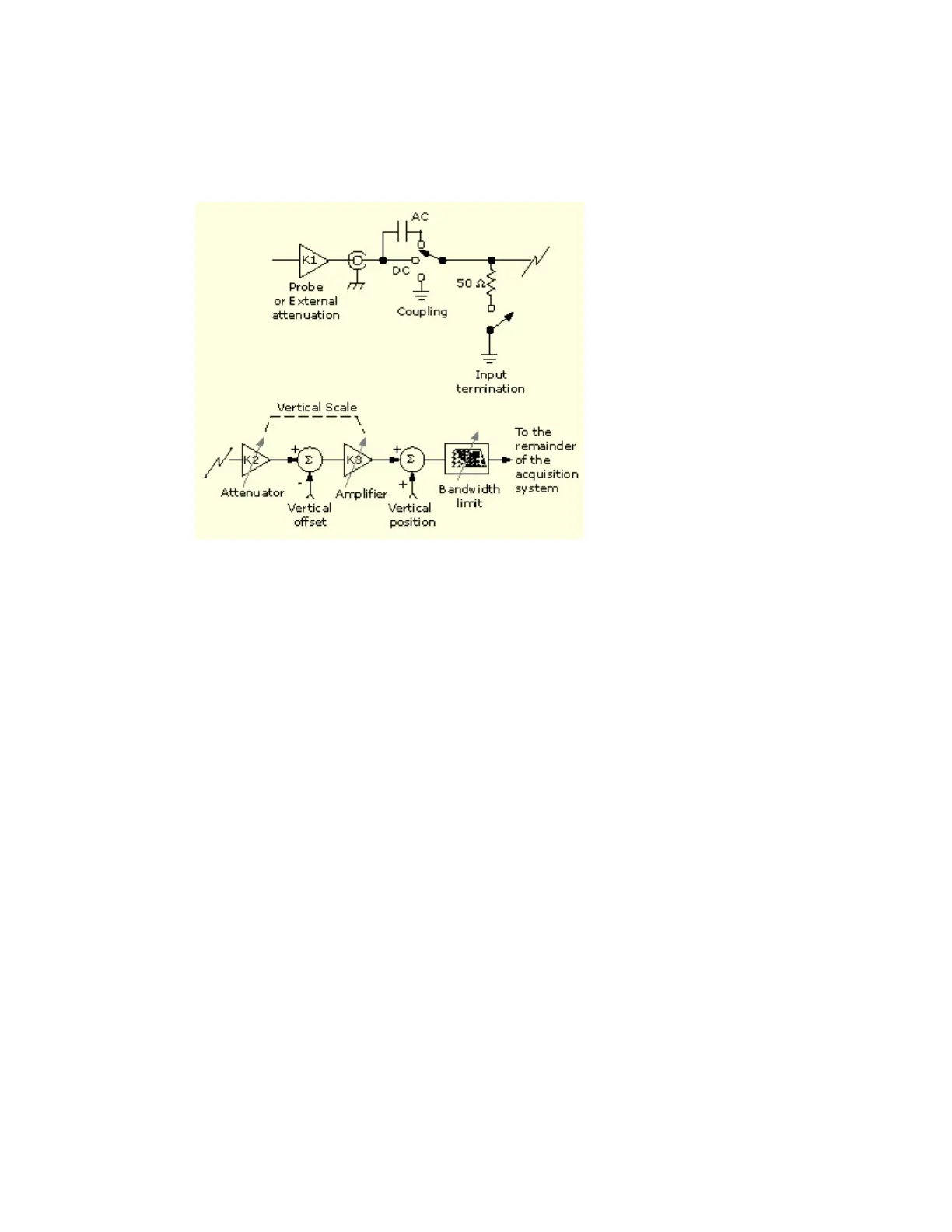227
Signal Connection
This diagram displays the signal connection model for each input channel.
Input Conditioning
Use input conditioning to ensure that the instrument acquires the best possible data for processing.
To do this:
Set the vertical scale to control the size of the vertical acquisition window for each channel to
capture all or part of the input signal’s vertical amplitude. When vertical scaling is set to
capture a fraction of the input signal (to increase detail), the vertical offset control determines
which part of the input signal is captured by the vertical acquisition window. (See note)
Set the horizontal scale to control the size of the horizontal acquisition window to capture as
much as you want of the input signal(s). Set the horizontal position to change the trigger
position or to delay the window relative to a trigger event and to control where in the input
signal (data stream) that the horizontal acquisition window acquires. (See note.)
For more background on acquisition windows, refer to Vertical Acquisition Window
Considerations on page 229 or Horizontal Acquisition Window Considerations on page 231.
The instrument can automatically obtain and display a stable waveform of usable size. Push the
AUTOSET button to automatically set the instrument controls based on the characteristics of the
input signal. Autoset is much faster and easier than a manual control-by-control setup.
The instrument can also be reset to its factory default settings by pushing the front-panel
DEFAULT SETUP button.
Use of some input conditioning controls or features may be limited when other control settings are
in effect. Voltage offset is incompatible with reference waveforms because offset is an acquisition
control for live waveforms (channels), not stored waveforms (reference).

